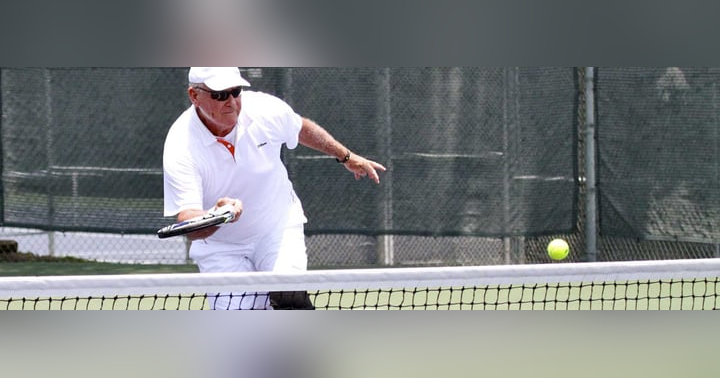10 common questions about Pickleball

The popularity of Pickleball has grown substantially over the past few years and, with 4 million players, it’s now one of the fastest-growing sports in the USA. However, there's confusion about many aspects of the sport. With that in mind, we’ve answered 10 of the most commonly asked questions about Pickleball.
1. Why is it called Pickleball?
There are two common theories as to where the name Pickleball originated from. The first theory is that the sport is named after the creator of the game’s dog ‘Pickles’ who used to chase the ball around and interrupt the match. The second theory is that it is named after the “pickle boat” which is the boat that finishes last in a race and is usually made up of a team of leftover crewmen. The mixture of crew members is reminiscent of the fact that Pickleball is a mixture of various racquet sports; tennis, badminton, ping pong, etc.
2. How is Pickleball scored?
Points in a Pickleball match can only be scored by the player or team that is serving, and a match is typically played as the first to 11 points. There does however need to be at least a clear two-point difference in order for a winner to be determined.
3. What are the dimensions of a Pickleball court?
A standard Pickleball court has the same dimensions as a standard doubles badminton court. The court is, therefore, 20 feet wide and 44 feet long. The same-sized court is used for both singles and doubles in Pickleball.
4. What is “the kitchen” in Pickleball?
The “kitchen” or non-volley zone is one of the most infamous rules from Pickleball. In simple terms, the kitchen zone is a seven-foot zone on either side of the net. Players cannot be touching the zone or the line with any part of their body, or their partner’s body when volleying the ball. The rule also includes the player’s momentum when landing, meaning they cannot finish in the kitchen after volleying the ball.
5. What is the double bounce rule in Pickleball?
The double bounce, or two bounce rule, states that each team must allow the ball to bounce before returning their first shot. The receiving team must let the serve bounce and the serving team must let the return bounce before playing it. After these two shots have been played the ball can be either played off the bounce or volleyed.
6. Do you get a second serve in Pickleball?
No, there is no second serve in Pickleball. If the ball is served out of the court, into the net or into the no-volley zone it is a side out and the serving is swapped to the other team or player.
7. Can Pickleball be played outdoors?
One of the best things about the sport of Pickleball is it’s versatility, meaning it can be played either indoors or outdoors. Ultimately a players should look to improve their game both indoors and outdoors to help make them a more well-rounded player. Playing outdoors, of course, comes with a different set of challenges a player must overcome, most notably any potential changes in weather.
8. What is a side out in Pickleball?
A side out is called when the second server on a team loses a point, and the service will swap over to the other team. Quite simply it is called a side out because that side is out. Many new players get this confused with the ball going out of bounds.
9. What are Pickleball paddles made from?
Pickleball paddles are commonly made of three materials; wood, composite, or graphite. Each of which has its own pros and cons.
- Wood: These are often the best choice for beginners as they are the cheapest, however, they are much heavier than the other alternatives.
- Composite: A happy medium, they aren’t the most expensive paddles on the market but are available in a variety of weights and sizes.
- Graphite: Can be very light and powerful, however, they are the most expensive choice.
10. Is Pickleball a good workout?
Put simply, yes Pickleball is a great workout for people of all ages. Like most other racquet sports Pickleball is not only a great physical workout but it is also a sport that tests players mentally. Due to the nature of the sport Pickleball is a great way to improve all aspects of your physical fitness, and can be enjoyed at all ages.











